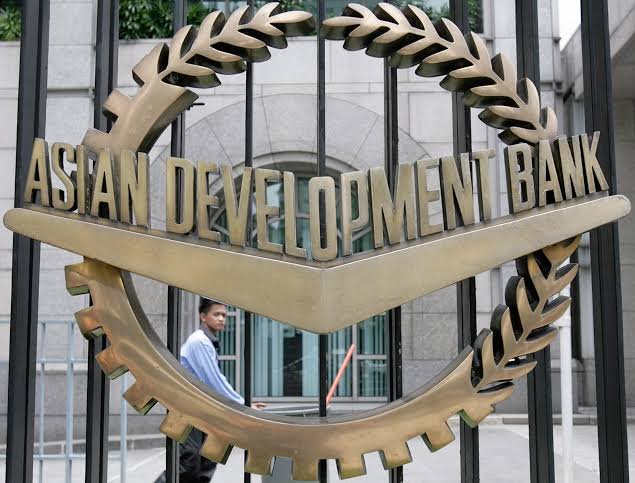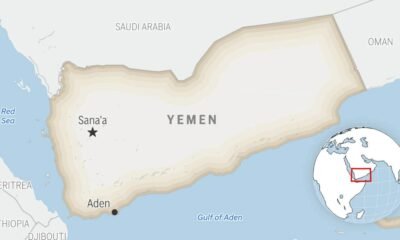Travel Guides & Articles
Middle East Travel Sector Raises Serious Concern about Safe Travel as Iran-Israel Have New Conflict Causing Airspace Closures and Flight Reroutes, Impacting Trip from Israel, Iran, Jordan, and Iraq: New Update

Saturday, June 14, 2025
On Friday, June 13, 2025, a sudden and unprecedented missile attack by Iran on Israel triggered widespread disruptions in global air travel. The attack, which was launched in retaliation for Israel’s strikes on Iranian nuclear facilities, led to the closure of airspace over multiple countries, including Iran, Israel, Jordan, and Iraq. This escalation of tensions has caused significant disruptions in the aviation sector, with dozens of international flights being diverted or canceled, affecting travelers worldwide.
The impact of these disruptions rippled across continents, especially affecting Middle Eastern and European flights. Airlines, including major international carriers like Air India, Qatar Airways, and Emirates, were forced to adjust their routes, while several flights from European carriers were rerouted due to the airspace closures. This event marks the beginning of what could be a prolonged period of uncertainty for global air travel, with repercussions on the economy, tourism, and flight operations.
The escalating conflict between Israel and Iran has severely disrupted global air travel. On June 13, 2025, airspace closures over Iran, Israel, Iraq, and Jordan led to widespread flight cancellations and rerouting, impacting thousands of travelers. Major airlines, including Air India, Emirates, and Lufthansa, faced delays and significant operational challenges. Middle Eastern hubs like Tel Aviv, Tehran, and Dubai were particularly affected. Safety concerns and rising fuel prices are expected to increase airfare costs and travel times, further straining the tourism industry. Experts warn of prolonged disruptions as airlines avoid conflict zones. This situation has led to a decline in tourism to the Middle East, with travelers opting for more stable destinations due to safety concerns.
Travel Advisories Issued by Major Countries
In response to the escalating situation, several governments have issued updated travel advisories:
- United States: The U.S. State Department has advised against all travel to Iran, Iraq, and Israel, citing the risk of missile attacks and other security threats.
- United Kingdom: The UK Foreign, Commonwealth & Development Office (FCDO) has updated its travel advice, warning against all but essential travel to Israel and parts of the West Bank.
- Australia: The Australian government has joined the U.S., UK, and other nations in issuing travel warnings, urging citizens to exercise increased caution when traveling to the Middle East.
The Initial Impact: Flight Cancellations and Rerouted Journeys
As the conflict between Israel and Iran unfolded, airspace in the region was swiftly shut down for safety reasons. This led to the immediate rerouting of several long-haul flights, particularly those passing through the affected areas. Airlines such as Air India, which operates international routes between major cities in Asia, Europe, and North America, were directly impacted by the airspace closures. In total, 17 pairs of Air India flights were either diverted or forced to return to their points of origin, significantly disrupting the schedules of thousands of passengers.
Some of the diverted Air India flights included:
- AI130 (London Heathrow–Mumbai): Diverted to Vienna
- AI102 (New York–Delhi): Diverted to Sharjah
- AI116 (New York–Mumbai): Diverted to Jeddah
- AI2018 (London Heathrow–Delhi): Diverted to Mumbai
- AI129 (Mumbai–London Heathrow): Returned to Mumbai
- AI119 (Mumbai–New York): Returned to Mumbai
- AI103 (Delhi–Washington): Returned to Delhi
- AI106 (Newark–Delhi): Diverted to Vienna
- AI188 (Vancouver–Delhi): Diverted to Jeddah
- AI101 (Delhi–New York): Diverted to Frankfurt/Milan
- AI126 (Chicago–Delhi): Diverted to Jeddah
- AI132 (London Heathrow–Bengaluru): Diverted to Sharjah
- AI2016 (London Heathrow–Delhi): Diverted to Vienna
- AI104 (Washington–Delhi): Diverted to Vienna
- AI190 (Toronto–Delhi): Diverted to Frankfurt
- AI189 (Delhi–Toronto): Returned to Delhi
The disruption caused by the missile attacks created a domino effect, impacting airlines globally and stranding thousands of passengers across different time zones. As airspace over Iran and Israel remained closed, flights that were scheduled to pass through these regions were either forced to take longer detours, adding hours to travel time, or were canceled outright.
Middle Eastern and European Flights Affected
The airline industry in the Middle East was also significantly impacted. Major carriers such as Qatar Airways and Emirates Airlines experienced significant diversions, with several of their long-haul flights rerouted to alternative airspaces. Istanbul Airport, a major global hub, reported disruptions of at least 19 flights due to airspace closures. Meanwhile, in the United Kingdom, British Airways had to reroute its London to Dubai flight to Larnaca, Cyprus. Other carriers, such as El Al, redirected flights from Rhodes to Tel Aviv, while Royal Jordanian Airlines rerouted a Paris-Amman flight.
Flight tracking platforms reported that multiple European airlines, including Lufthansa and Swiss International Airlines, were also forced to reroute or return flights that were set to traverse Iranian airspace. In particular, Lufthansa had to turn back three flights en route to India and Dubai, which added up to eight extra hours to their travel time.
The Impact on Air Travel Costs and Operations
This disruption in air travel is not only affecting the immediate schedules of airlines but also creating longer-term implications for the global travel industry. Captain NK Beri, a former Air India pilot with over 20,000 hours of experience, explained that the rerouting of flights due to airspace closures would result in longer travel times and increased fuel consumption. He projected that travelers could see an increase of at least 10-20% in airfares due to the added costs incurred by airlines for fuel and detours.
Additionally, the longer flight paths require more fuel and increase the strain on aircraft availability and crew rotations, which could further lead to delays and cancellations in the weeks ahead. As flights take detours through safer airspaces, airlines are being forced to make operational adjustments, leading to higher operational costs and longer wait times for passengers.
Safety Concerns and Aviation Risks
The sudden closure of airspace and the ongoing regional instability raise serious concerns about the long-term safety of air travel in the affected regions. Sharda Prasad, former Commissioner of the Bureau of Civil Aviation Security (BCAS), warned that the closure of airspace is often the first response during military escalations, as it is intended to protect civilian flights from potential threats. However, he pointed out that it could have wider-reaching consequences, including the potential for airport seizures or aircraft hijackings, actions that could disrupt global aviation on an even larger scale.
Prasad further explained that when a country closes its airspace, commercial flights must divert to alternative routes, often taking longer and less direct paths to reach their destinations. This not only leads to increased fuel consumption but also places more pressure on airports and air traffic controllers, who are now tasked with managing an increased number of flight detours and delays. Given the unpredictable nature of the situation, travelers and airlines must remain flexible, prepared for potential changes in air routes and schedules.
Long-Term Effects on Global Tourism and Travel Habits
The ripple effects of the Israel-Iran conflict will likely be felt in the tourism sector for months to come. Dr. Subhash Goyal, Chairman of the Tourism Committee at the Indian Chamber of Commerce, expressed concerns that the disruptions in air travel could lead to a rise in airfares, which may discourage international tourists from visiting regions that rely on affordable flights. He also noted that with the increased airspace restrictions, airlines would be forced to reroute flights over more expensive and longer routes, further raising operational costs that will inevitably be passed on to consumers.
Tourism to destinations such as Israel, Iran, and the broader Middle Eastern region may be impacted by both safety concerns and increased costs. As the conflict continues to unfold, travelers may choose to delay or reconsider travel plans to the affected regions, leading to a decline in bookings for airlines and tourism providers. Furthermore, destinations that are geographically close to conflict zones, like Turkey and Greece, may also see a decrease in visitors, as concerns over air travel safety and regional instability weigh on tourists’ minds.
On the other hand, some destinations may see a surge in travel as tourists reroute their plans to avoid the Middle East. Countries such as the UAE, Saudi Arabia, and Egypt, which serve as alternative gateways to the region, may experience an uptick in bookings from travelers who need to adjust their itineraries due to the closure of airspace and flight disruptions.
The Global Economic Impact and Airline Adjustments
The ongoing conflict between Israel and Iran is likely to have broader economic consequences on the global travel and tourism sectors. Fuel costs, which already account for a significant portion of airline operating expenses, could see a sharp increase as geopolitical tensions escalate. Should crude oil prices rise further in response to the ongoing conflict, airlines may be forced to increase airfares, further deterring travelers from booking flights, particularly for long-haul routes.
Industry analysts predict that the combination of longer flight times, increased fuel consumption, and geopolitical uncertainty will likely make air travel more expensive and unpredictable. Travelers should expect a more costly and less flexible travel experience in the coming months as the aviation industry grapples with these challenges.
Air Travel Industry Faces Uncertainty Amid Geopolitical Tensions
In conclusion, the missile strikes between Israel and Iran have caused significant disruptions in global air travel, affecting not only airlines operating in and around the Middle East but also creating ripple effects across Europe, Asia, and beyond. The immediate impact of airspace closures, rerouted flights, and increased costs is already being felt by passengers and airlines alike. As the situation continues to evolve, the global travel industry will need to remain adaptable to the changing landscape, with airlines facing heightened operational challenges and travelers dealing with higher costs and potential delays.
As tensions in the Middle East escalate, travelers must stay informed about the latest developments and be prepared for changes in their travel plans. While the long-term effects on tourism remain uncertain, it is clear that the conflict between Israel and Iran will continue to shape the future of global air travel, affecting both the economics of the industry and the choices of international travelers.
Travel Guides & Articles
Pickyourtrail expands omnichannel presence across India with 3 stores

Pickyourtrail has announced the launch of three new offline stores across Chennai, Kochi, and Vapi this month. This expansion marks another milestone in the brand’s omnichannel journey, seamlessly blending digital convenience with the trust of in-person consultations. With these additions, Pickyourtrail moves closer to its vision of opening 50+ stores across India in the next 12–18 months, making personalised international holidays more accessible to travellers nationwide.
A recent BCG report highlights India as one of the fastest-growing global travel markets, with domestic leisure travel expected to grow at 12% annually until 2040, and international travel at 10%. This surge is driven by Millennials and Gen Z, who are prioritising discovery, personalisation, and hybrid planning journeys that combine AI tools with human expertise. Reflecting this trend, Pickyourtrail has recorded a 23% rise in hybrid bookings, with such customers spending 12% more on trips, opting for longer stays, and showing stronger repeat and referral behaviour.
Anchored in its proprietary AI-driven platform, the brand’s omnichannel strategy has already reduced decision fatigue by 20% for travellers. Its growing network of offline stores is designed to complement this digital backbone, providing reassurance through physical touchpoints. The company’s stores have seen a 3–4% lift in conversions in the past six months, reinforcing the need for high-trust, human-led experiences in international travel planning.
“With every new store, we see not just more walk-ins and conversions, but also a stronger sense of confidence among customers,” said Hari Ganapathy, CEO & Co-founder of Pickyourtrail. “International holidays are big decisions for families, and our stores help bridge the gap between aspiration and action by offering personal assurance alongside digital convenience.”
He added, “India is at a turning point in the way it travels. Younger explorers want flexibility, not friction, and our omnichannel approach is designed around that insight. Whether customers start online and finish in-store, or vice versa, our goal is to provide the same level of care and clarity at every stage.”
As India’s travel landscape grows more aspirational and experience-driven, Pickyourtrail continues to double down on its mission of making world-class, customised holidays accessible to more Indians. Several new store launches are already planned for the coming quarter, reinforcing the brand’s commitment to shaping the future of travel through a perfect balance of technology and human touch.
Travel Guides & Articles
ADB partners with India for USD 126.42mn loan to boost Uttarakhand tourism

The Asian Development Bank (ADB) and the union government have signed a loan agreement worth USD 126.42 million to promote sustainable and climate-resilient tourism in Uttarakhand. The initiative, announced by the finance ministry, aims to transform Tehri Lake into a key hub while positioning the state as a diversified, all-weather tourism destination. Officials highlighted that this project aligns with Uttarakhand’s broader strategy of driving rural growth through sustainable tourism models.
The project focuses on Tehri Garhwal, one of Uttarakhand’s most climate-vulnerable regions. It is expected to benefit more than 87,000 residents and 2.7 million annual visitors by improving infrastructure, planning, and essential services. The plan emphasises better sanitation, waste management systems, and disaster preparedness to ensure safety and sustainability for both locals and travellers.
According to Juhi Mukherjee, joint secretary in the Department of Economic Affairs, the ADB loan directly supports the government’s tourism policy for Uttarakhand. She stressed that Tehri Lake has been identified as a priority zone for development, providing the state with opportunities to diversify income streams while preserving ecological balance.
ADB’s India Resident Mission officer-in-charge, Kai Wei Yeo, said the project is a model for integrating rural development with tourism. He explained that adopting a multisector approach would generate jobs, build climate resilience, and support Uttarakhand’s long-term economic growth. This reflects ADB’s larger vision of combining infrastructure investment with community-focused outcomes.
Key interventions under the project include climate-resilient infrastructure, nature-based solutions to address landslide and flood risks, and enhanced institutional capacity. The initiative also focuses on inclusive tourism, with a strong role for women, youth, and the private sector. These interventions are designed to create a more equitable and participatory tourism ecosystem in the region.
Notable features of the programme include a livelihood matching grant for women- and youth-led tourism businesses, universal access design to ensure inclusivity for persons with disabilities, and disaster risk management initiatives in pilot villages. Together, these measures aim to position Uttarakhand as a global example of sustainable tourism development while empowering local communities.
Travel Guides & Articles
What is the Indo-Nepal Treaty of Friendship which allows Visa-Passport free travel between the two countries, India-Nepal borders are open because…

The 1950 Peace and Friendship Treaty between India and Nepal is the corner stone of India-Nepal relations.
Nepal-India border: Amid the high-tension political turmoil in Nepal, one of the treaties that is being widely discussed in both India and Nepal is the 1950 Peace and Friendship Treaty between both the neighbouring countries. The 1950 Peace and Friendship Treaty between India and Nepal is the foundation of the relationship between the two countries governing how both the countries would treat the citizens of each other. Under this treaty, citizens of both countries have the right to travel, settle, trade and buy property without visa, making the Nepal-India border open. Here are all the details you need to know about 1950 India-Nepal Peace and Friendship Treaty.
Why are India and Nepal important for each other?
It is widely acknowledged that Nepal is dependent on India for trade and employment, while for India Nepal is like a buffer state between China.
Why Nepal has been demanding changes in the Treaty?
Nepal has been demanding changes in this treaty many times citing several reasons. Nepal says that this treaty was signed in 1950 with the Rana ruler, who was unpopular, and India gets more benefits in it. Nepal especially objects to Articles 2, 6 and 7 because according to these articles, Nepal has to inform India before making relations with third countries and the citizens of both countries get equal rights.
According to what Nepal claims, when Nepal bought weapons from China in 1988, India considered it a violation of the treaty and closed the border for 17 months, due to which Nepal had to face economic and security crisis. This is why Nepal considers this treaty as a restriction on its independent foreign policy and sovereignty.
Story highlights:
- The 1950 Peace and Friendship Treaty is a treaty between India and Nepal.
- The treaty covers various issues including visa issues.
- The treaty is in news due to the recent political turmoil in Nepal.
India-Nepal relations
India-Nepal relations are based on deep cultural, religious and familial ties, but disputes have repeatedly arisen over the 1950 treaty. Nepal considers it unequal, while India calls it a guarantee of mutual trust and cooperation. The treaty is in news as Nepal is undergoing a political turmoil
-

 Business2 weeks ago
Business2 weeks agoThe Guardian view on Trump and the Fed: independence is no substitute for accountability | Editorial
-
Tools & Platforms1 month ago
Building Trust in Military AI Starts with Opening the Black Box – War on the Rocks
-

 Ethics & Policy2 months ago
Ethics & Policy2 months agoSDAIA Supports Saudi Arabia’s Leadership in Shaping Global AI Ethics, Policy, and Research – وكالة الأنباء السعودية
-

 Events & Conferences4 months ago
Events & Conferences4 months agoJourney to 1000 models: Scaling Instagram’s recommendation system
-

 Jobs & Careers2 months ago
Jobs & Careers2 months agoMumbai-based Perplexity Alternative Has 60k+ Users Without Funding
-

 Podcasts & Talks2 months ago
Podcasts & Talks2 months agoHappy 4th of July! 🎆 Made with Veo 3 in Gemini
-

 Education2 months ago
Education2 months agoMacron says UK and France have duty to tackle illegal migration ‘with humanity, solidarity and firmness’ – UK politics live | Politics
-

 Education2 months ago
Education2 months agoVEX Robotics launches AI-powered classroom robotics system
-

 Funding & Business2 months ago
Funding & Business2 months agoKayak and Expedia race to build AI travel agents that turn social posts into itineraries
-

 Podcasts & Talks2 months ago
Podcasts & Talks2 months agoOpenAI 🤝 @teamganassi



















